What to see and do in Växjö? Växjö is a pleasant city that offers many exciting historical sites as well as glass art and beautiful nature. Here are our top tips on what to see and do in Växjö!
Table of contents
Växjö
We visited Växjö this summer, with our motorhome. We managed to see and do a lot in this nice city, but we didn't have time to write. Here is our report!
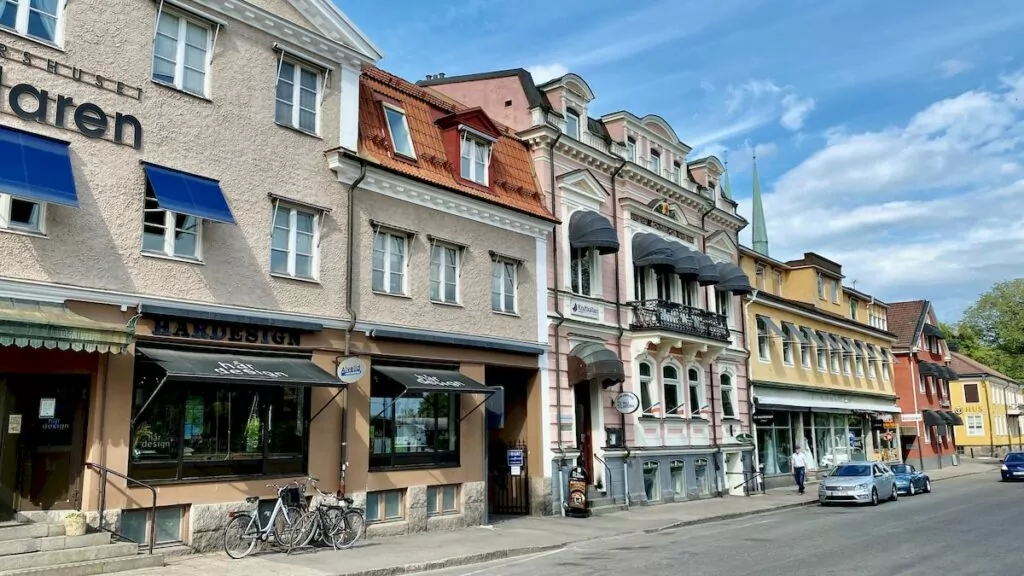
Växjö is located in the centre of Småland, about 10 miles northwest of squid.
What can you do in Växjö?
So what can you see and do in Växjö? There is a lot to discover, we can say. We have collected our best tips here in a list.
1. Strolling in the centre of Växjö
First of all, you can of course stroll around the centre of Växjö. For example, you can visit Stortorget with buildings such as Residenset and Stadshotellet. On certain days and at certain times of the year, the city centre can be used for market trading or for organising various markets and parties.
You can also stroll along Storgatan, a 700 metre long pedestrian street with plenty of shops. If you want to shop even more, you can head to the Grand Samarkand shopping centre.

2. Being impressed by Växjö Cathedral
Växjö Cathedral is a beautiful red church of medieval origin. The church was built in the 12th century, but its appearance is heavily influenced by renovations in the 19th and 20th centuries.
Inside the church you can see some beautiful glass art, which of course is related to being close to the Småland Glass Kingdom. The altar cabinet, for example, was created by the famous glass artist Bertil Vallien.



Outside the church, you can see a statue of Bishop St Sigfrid (early 11th century) and a statue of Bishop Esaias Tegnér (1782-1846).



There is also a rune stone on one wall. The rune stone is from the 11th century AD and was found in one wall of the cathedral in 1813. The text on the stone reads something like "Tyke - Tyke Viking - erected the stone after Gunnar, Grim's son. God help his soul."

3. Discover the Museum Park
Museiparken is an open-air museum in the centre of Växjö, where you can stroll around a number of historical buildings. It is also home to the House of Emigrants and the Småland Museum.

The oldest ancient remains on the site are rock chests, which were built at the end of the Stone Age, i.e. around 2400 BC to 1800 BC. Other buildings here include Loftboden from Långaskruv, Väderkvarnen from Sirkö and Högloftsstugan from Sundranäs.
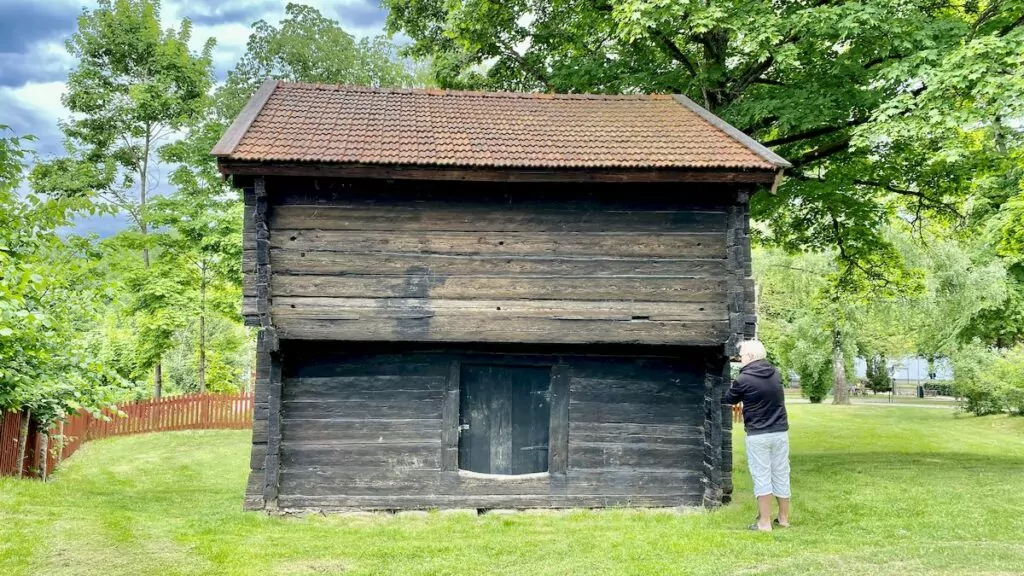


4. Visit the House of Emigrants
When you are at the Museum Park, you can take the opportunity to look into the House of Emigrants. Here you can learn more about the history of the 1.3 million Swedes who emigrated to the USA from the mid-19th century until the 1920s. If you want to delve even more deeply into the history, you can complement it with a trip to the House of Emigrants. Emigrant settlements.

5. Take a look around the Småland Museum / Swedish Glass Museum
Also close by is the Småland Museum/Swedish Glass Museum. It has both glass and historical exhibitions.

For those interested in glass and craftsmanship, there is a lot to be found here, both in terms of history and large collections of artefacts.
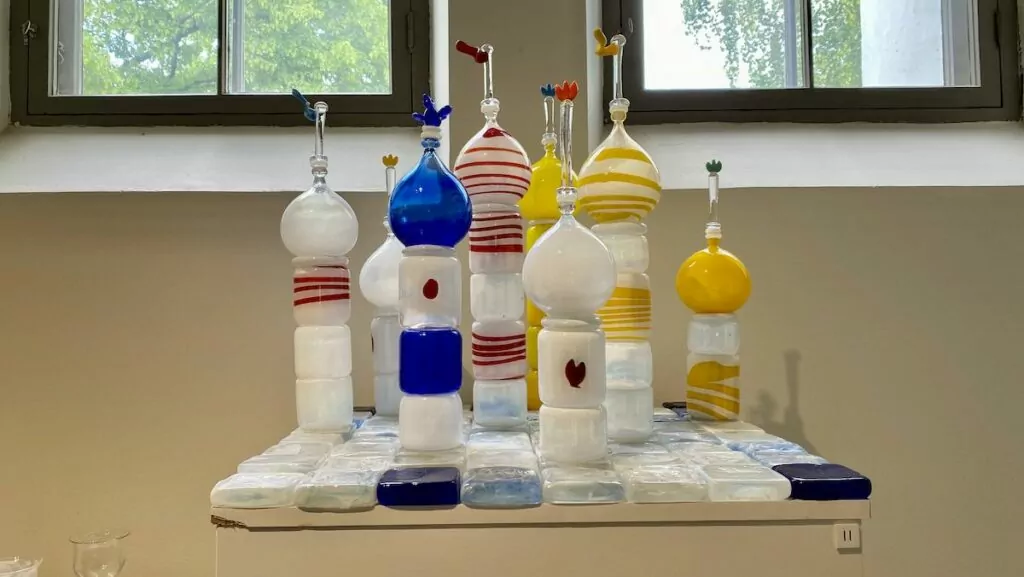

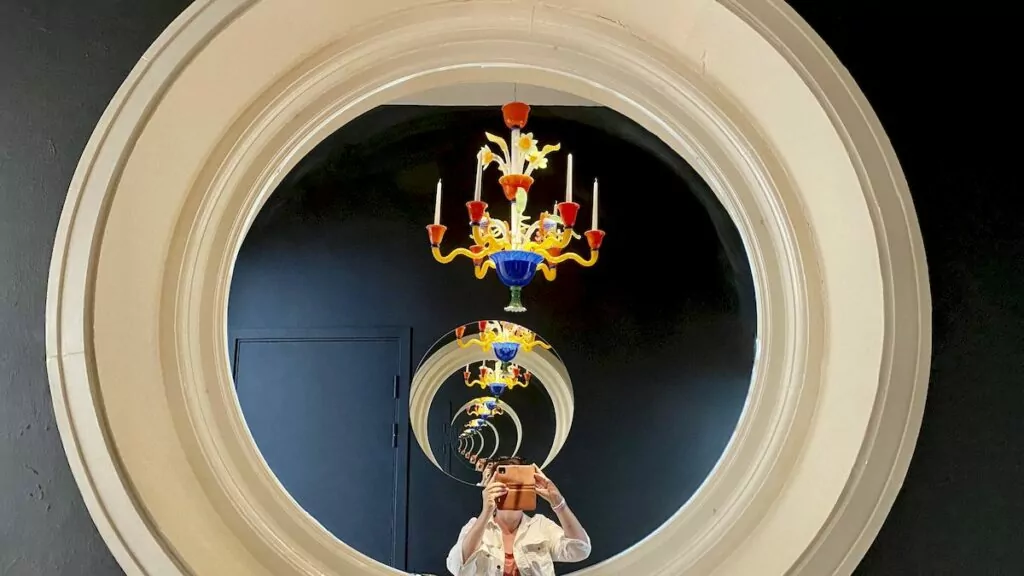
The museum also hosts various historical exhibitions. We particularly liked the exhibition "13,000 years - ancient times close to us", a very nice and engaging exhibition that follows the history from the Stone Age onwards.

6. Cycling along Växjösjön and Trummen.
If you cycle along Växjösjön and Lake Trummen, you can get a really nice bike ride. We had our sights set on Linnéträdgården, but stopped several times along the way to take photos.

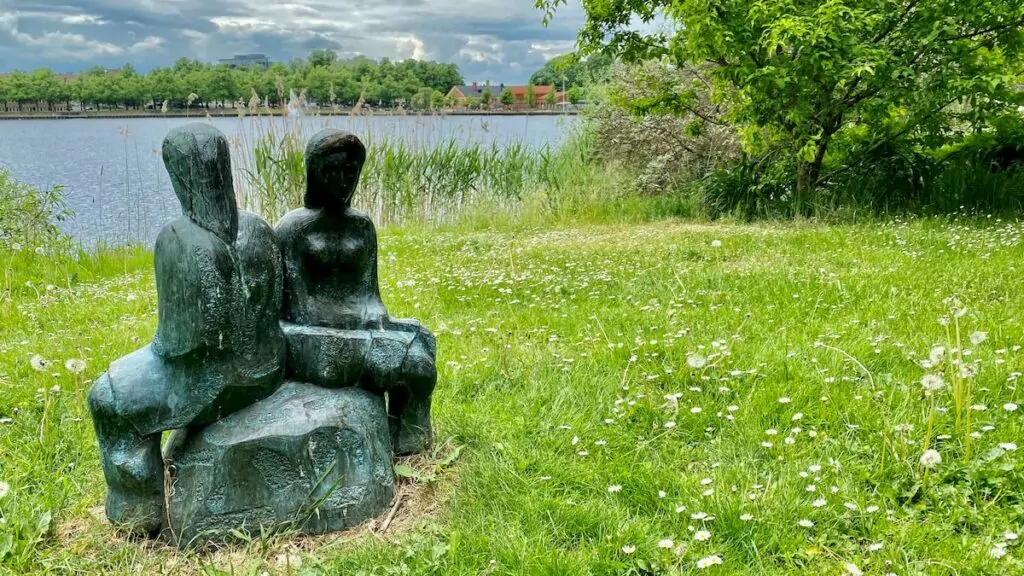

7. Experience the Linnaeus Garden
Linnéträdgården is located right next to Lake Trummen. This lovely little garden combines plants with art, architecture and design.

The garden is a tribute to the Småland botanist Carl Linnaeus and won a gold medal at the prestigious Chelsea Flower Show in London in 2007. Although the garden is not large, it is worth a short stop.

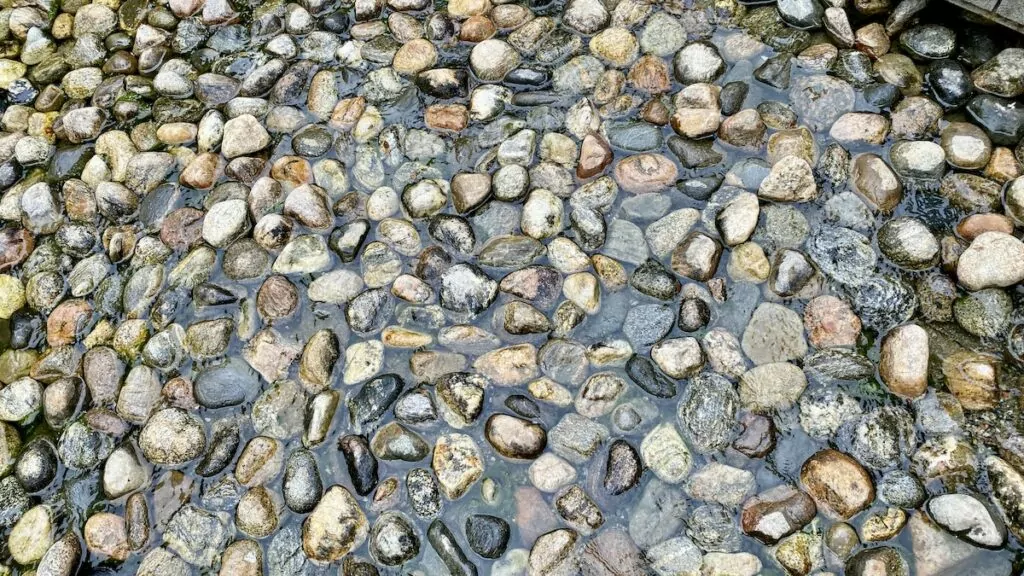

8. Take a trip on the steamer Thor
Ångaren Thor, from 1887, is Sweden's oldest wood-fuelled steamboat that runs tours on Lake Helga during the summer. Go to Sweden's southernmost lock in Åby. The tours depart from Kronoberg Castle Ruin.

9. See Granhult's church
A bit northeast of Växjö is Granhult's church, which can pride itself on being Sweden's oldest wooden church. The church itself was built in the 13th century, and the beautiful interiors are mainly from the 17th and 18th centuries.

10. Take a trip to Dädesjö Old Church
Another church worth checking out is Dädesjö Old Church. This small stone church is also from the 13th century. Inside the church there are well-preserved medieval paintings, and the wooden roof is the best preserved, never painted over, church roof in northern Europe.



11. Take a trip to the Kronoberg Castle ruins.
Kronoberg Castle Ruin is a well-preserved historical ruin with interesting stories to tell. The fortress was originally built in the 15th century, but is perhaps best known for the events of the Dacke feud in the 16th century. Dacke was strong, but Gustav Vasa was stronger.
Want to know more about history? Visit the Kronoberg Castle ruins. For a small entrance fee, you can take a look around the ruin and the exhibitions on display. There is a restaurant right next door.

12. Have lunch at Teleborg Castle
Teleborg Castle is a beautiful fairytale castle located just outside the centre of Växjö. The impressive building was completed in 1900, as a morning gift from Count Fredrik Bonde of Björnö to his young wife Anna Koskull. You can visit the castle to enjoy a good lunch, or to stay over in one of the hotel rooms. Guided tours are also sometimes organised.

13. Be fascinated by Bergkvara Castle ruins
Bergkvara Ruin is a powerful old manor house from the 1470s. Around 1500, up to 1500 farms belonged to the estate, making Bergkvara one of the largest estates in the Nordic region.
During the Dacke feud, violent battles took place here. Today this is a quiet and peaceful place right next to a lake. The adjacent Bergkvara Farm is private and cannot be visited, but the footpath down to the castle ruins is open to the public.



14. Spend a day at Huseby Mill.
Huseby Bruk is a fine destination in Småland with old mill environments, castle, park, restaurant, shops and exhibitions. The mill is like a time bubble that shows what it looked like here when the last owner, Miss Florence Stephens, lived here.
Huseby Bruk functioned for a long time as an ironworks and was also the site of the 'Huseby affair'. Today it is Kronoberg County's most popular tourist destination, with around 150,000 visitors per year. Everything from guided tours and events to a Christmas market is organised here.

15. Relax at Evedal campsite
Close to the city centre, but in a peaceful location by Lake Helga, is Evedal's campsite. You can come here with your own caravan or spend the night in a cabin. At the campsite there is a nice swimming area and the opportunity to rent a boat, fish, play football billiards and much more. We were especially pleased with the nice environment and very good and nice treatment.


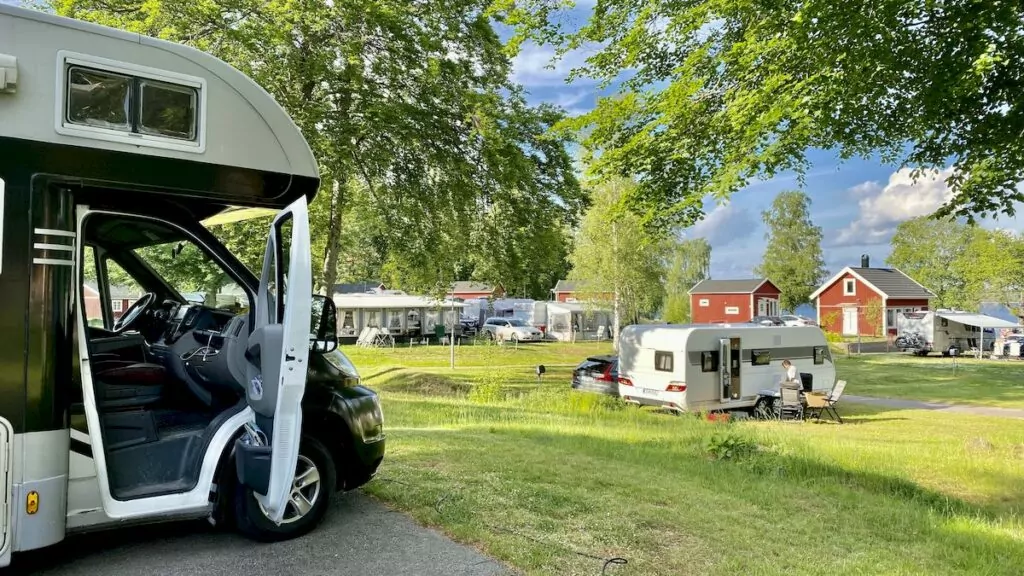
Where can you live or stay with your campervan?
If you want to stay at a campsite, we can definitely recommend Evedals camping (above), and another option is Öjaby camping. Other options for those arriving by motorhome are the central car park on Storängsgatan (no electricity) or parking at Kronoberg Castle Ruin (no electricity).

More things to do in Växjö for culture lovers
There is of course even more to see and do in Växjö than our suggestions. Here are some more tips for those interested in culture.
- Summer of the stage is Växjö's major summer initiative with eight weeks of music, dance, theatre, contemporary circus and stand-up comedy.
- Teleborg water tower from 1974 is sometimes referred to as the 'Temple of Echo' because of the powerful echo created under the tower.
- Växjö art centre showcases contemporary art, where the local and international go hand in hand (Västra Esplanaden 10).

More things to do in Växjö for nature lovers
Do you like nature best? Then you can find some more suggestions for things to do in Växjö here:
- Beechwood is a nature reserve and tourist destination with a lake, forests and open pastures.
- Hissö is an island in Lake Helga, with hiking trails and a nature reserve with a 150 to 200 year old beech forest.
- Lake Helga is a beautiful and popular lake among the people of Växjö.
- Notteryds nature reserve is a popular and well-visited destination for those who love nature and the outdoors.

More to do in Växjö with children
Here are some more tips for things to do in Växjö with children or teenagers.
- Beach birch is a child-friendly park with playgrounds, catering, tennis courts and a bird island where it is popular to feed the pigeons.
- Sweden Zipline offers an exciting adventure with Europe's longest zipline, for children from 5 years, young people and adults (Bränderydsvägen Sawcreek Crownpark, Klavreström).
- The Actic swimming pool in Växjö for the whole family.

More to see and do in the neighbourhood
Based in Växjö, we can recommend in particular to visit The Glass Kingdom in Småland, which offers glass art and huts, but also wonderful food and nature experiences. We can also recommend visiting Kyrkö Mosse car cemetery and IKEA Museum.
Fika and restaurants in Glasriket - 7 places you don't want to miss
There are some cafés and restaurants in Glasriket that you don't want to miss! We have...
Tättö Havsbad - nice campsite by the sea
Yesterday we ended up at a campsite at Tättö Havsbad, in Loftahammar north of Västervik. We...
What to do in Jönköping - 17 tips for the matchstick city
What to do in Jönköping? The city is famous for its matchstick history and you should...
Astrid Lindgren's World in Vimmerby - Grandma Anna's secret journey in 2024
Guest writer: Anna Nilsson Spets It was time for the annual secret trip with the grandchildren and...
What to do in Gränna - 9 tips for the candy cane town at Lake Vättern
What can you do in Gränna? Many would probably answer "eat candy canes" and that's...
Kalmar läns museum - about the regal ship Kronan
Kalmar County Museum offers a very exciting exhibition about the regal ship Kronan, which sank in...
The Matchstick Museum in Jönköping - an engaging story
The Matchstick Museum in Jönköping tells the story of a time of child labour and terrible working conditions, but also of...
Husqvarna museum - and more to do in Huskvarna
The Husqvarna Museum in Huskvarna tells the story of a company that started making rifles in the 17th century....
Gamleby camping - Kustcamp Gamleby
Now we have arrived at Gamleby camping, not far from Västervik. The campsite is large...
Motorhome pitches in Glasriket in Småland - we tested these 9
There are many campsites in Glasriket in Småland (far more than we first realised!) and...
Granhult church in Småland - Sweden's oldest wooden church
Granhult Church in Småland is Sweden's oldest wooden church. This fine little wooden church, dating from the 1220s, survived...
What to do in Eksjö - 11 tips for the wooden city in Småland
What to do in Eksjö? This town in Småland, often referred to as 'the unique wooden town'...
Kalmar castle - 800 years of war, celebration and power games
Kalmar Castle is a powerful building, which feels both historic and fairytale-like where it travels...
Glasshouses and glassworks in Glasriket - guide with map
Did you know that there are more than a dozen glassworks and glassworks in Glasriket? This Småland region...
Kosta Art Gallery - exciting art in the Glass Kingdom
Kosta Art Gallery is an art gallery in the Glasriket region of Småland, showcasing glass art by...
Ödevata farm hotel and caravan park - sustainable in Småland
Ödevata gårdshotell in Småland is a cosy, simple and natural hotel, where you are also...
Visiting Kosta in Glasriket - a gem in Småland
What is it like to visit Kosta in the Kingdom of Crystal? We have once again visited this gem in...
Packrafting on the Alster River - an adventure at Vidinge Gård, Småland
Writer: Helena Bergström Packrafting on the Alster River is a scenic adventure that we have long wanted to experience....
Teleborg Castle in Växjö - a fairytale castle in Småland
Teleborg Castle is a beautiful fairytale castle just outside Växjö. Here you can enjoy the...
Things to do in Kalmar - 17 tips for experiences and attractions
What to do in Kalmar? Well, we'll tell you! Kalmar is a...
Swedish Smålandsvägen - FREEDOMtravel Themed roads
The Swedish Småland Road is a themed road that takes you through beautiful Småland,...
What to do on Visingsö - 12 tips for Vättern's largest island
What can you do on Visingsö? First of all, you can take it easy and...
Europe's longest zipline - Sweden Zipline in Småland.
Europe's longest zipline course is in Sweden, deep in the forests of Småland. Of course...
Huseby mill in Småland - a well-preserved time bubble
Huseby Bruk is a great place to visit in Småland with old mill environments, castle, park, restaurant, shops and...
Vidinge gård och ställplats - dog-friendly accommodation in Småland, Sweden
Vidinge Farm is a dog-friendly accommodation in Småland, a camping site, a fishing centre and a starting point for...
Visiting a moose park - moose safari in Glasriket moose park
What is it like to visit a moose park? We have long been keen to familiarise ourselves...
Planning a trip in the Glasriket - we've tested the 'trip planner'
Did you know that you can plan a trip in the Glass Kingdom with the help of a digital...
Visiting Visan's ship - a different kind of monument in Småland
To visit Visan's ship is to take part in the Swedish song treasure, on a...
IKEA Museum in Älmhult - fascinating about a department store
The IKEA Museum tells the story of the huge furniture store founded in 1943, as a mail order company, by...
Lessebo hand-paper mill - try making paper
Lessebo handmade paper mill in Småland is something so special as a still-functioning mill where the...
Kronoberg castle ruins in Växjö - Vasa and the Dacke feud
Kronoberg Castle Ruin is a well-preserved historical ruin that tells interesting stories about Gustav Vasa and...
Blowing glass - try it at the Kosta Glass Centre
Want to try blowing glass? At the Kosta Glass Centre you can create your own...
Lysingsbadets camping - Västervik Resort in Västervik
We have now travelled to Lysingsbadets camping, which is located just outside Västervik. This...
James Bond museum in Småland - the world's only Bond museum
James Bond Museum in Småland - why is it here and can it really be...
Sauna rafting in Småland - a magical experience at Ödevata farm hotel
We have tested sauna rafts in Småland, at Ödevata Gårdshotell in Glasriket, and it was a ...
The Kyrkö bog car cemetery - a different kind of attraction
The Kyrkö mosse car cemetery outside Ryd in Tingsryd municipality is an unusual sight, to say the least. My ...
Trolls in Gamleby - Friends of the Garpe Sculpture Park
Trollen i Gamleby, or Friends of Garpe Sculpture Park, is a different kind of sculpture park in Västervik....
Things to do in Glasriket - 25 tips for sights and experiences
Writer: Helena Bergström What can you see and do in Glasriket in Småland? We have...
The emigrant village in Småland - in the footsteps of Vilhelm Moberg
The Utvandrarbygden in Småland is the area that many Swedes left to emigrate to...
Mönsterås by campervan - festival and camping site
In Mönsterås, between Oskarshamn and Kalmar, we were greeted by a blues festival, long-haired guys in leather clothes, pick-up trucks,...
Kosta Christmas market - a wonderful Christmas atmosphere in the Kingdom of Crystal.
Kosta Christmas Market is part of the Christmas celebrations in Kosta, in the Kingdom of Glass. Here you can experience ...
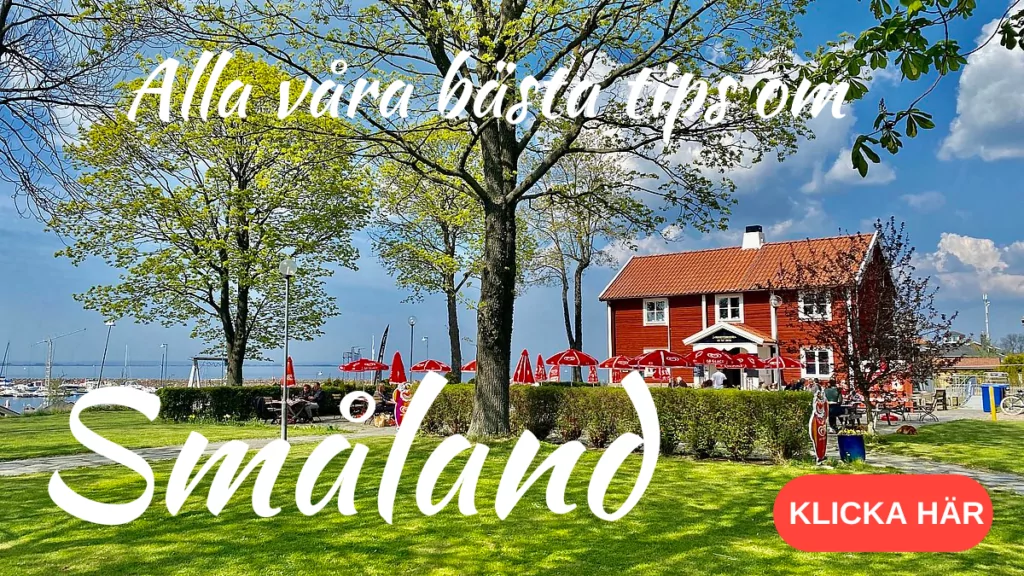
More to see and do in Växjö?
Have you visited Växjö? Tell us about your experience! Maybe you have even more tips on things to see and do in Växjö?
Facts about Växjö
- Landscape: Småland
- County: Kronoberg County
- District: Växjö Cathedral District, Växjö Maria, Skogslyckans, Teleborg, Öjaby, Gårdsby, and Bergunda.
- Residents: More than 95 000 (2021)
- Name: The name Växjö is formed from the Old Swedish words vaegar (roads) and lake.
History in Växjö
- Early Stone Age: Since this time (4100-1700 BC) the Växjö region has had a settled population.
- 11th century: Christianity took hold and a wooden church was built on the shores of Lake Växjö. The Christianisation of Växjö has been described in the Sigfrid legend, although research shows that many facts are incorrect.
- 1170: Around this time, Växjö became a bishop's seat.
14th century to 16th century
- 1342: Växjö was granted city privileges by King Magnus Eriksson.
- 1473: Växjö's two famous markets were mentioned for the first time: Sigfridsmässomarket (February) and Brittmässomarket (October).
- 1570: The city was attacked and destroyed by the Danes.
17th to 18th century
- 1612: The city was attacked and destroyed again by the Danes.
- 1634: Växjö became the city of residence.
- 1643: The city's cathedral school was granted upper secondary school privileges and became Sweden's sixth upper secondary school.
- 1658: The Peace of Roskilde meant that Växjö suddenly found itself at a safer distance from the national border. In the same year, the city suffered a serious fire.
19th century
- 1824: Esaias Tegnér became bishop of Växjö and principal of the Cathedral School.
- 1843: Växjö suffered the worst fire in the city's history. The new city plan in 1844 made the square much larger.
- 1865: The railway ran from Alvesta to Växjö, and more lines were added over time.
- 1868: Wäxjö Tändsticksfabrik was founded and became the town's largest workplace, employing at most over 400 people.
20th century to present
- 1922: The match factory burned down and was not rebuilt.
- 1967: The university branch in Växjö was established under Lund University, and this later became the independent University of Växjö.
- 1999: Växjö University College was granted university status.
- 2010: Växjö University and Kalmar University College were merged to form Linnaeus University.









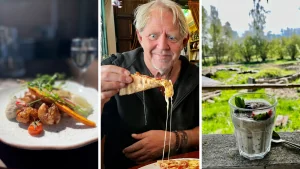



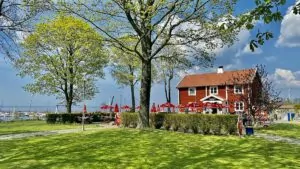



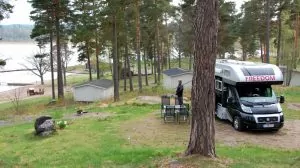
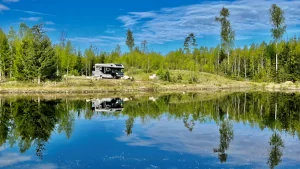





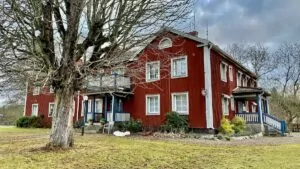







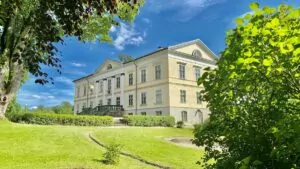






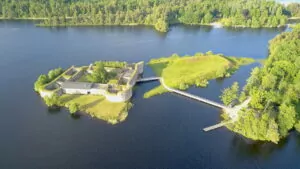
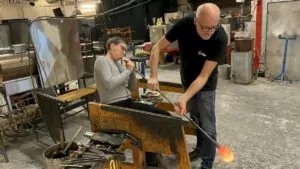







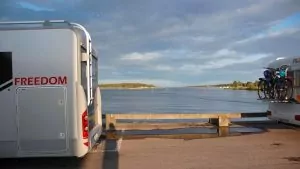









Goatfish says:
Växjö is nice. I have been there many times and visited my brother and sister-in-law. They have a photo shop Ernstson Foto on Klostergatan near the railway. The brother-in-law has photographed many bridal couples in front of Teleborg Castle, a popular view.
Great report by you!
Kram, Gerd
11 December 2021 - 11:40
Helena says:
Isn't Växjö beautiful! Understand that Teleborg's castle is a popular view for bridal couples. So beautiful and fabulous there 🙂 Glad you liked our report!
12 December 2021 - 10:27
Amanda (Swedish Passport) says:
And now I have to put Växjö on my must-visit list! 😀
11 December 2021 - 12:02
Helena says:
I think so 🙂
12 December 2021 - 10:27
JoY says:
Thanks for that tip. Have never stayed in Växjö, it looks nice and reminds me a bit of Eksjö or?
Have a nice 3rd Advent
11 December 2021 - 12:23
Helena says:
Good question, we have never been to Eksjö, so no idea 😉 But maybe we should put Eksjö on our list then? 🙂
12 December 2021 - 10:28
Only British says:
Yes, you really should. Much more beautiful than Växjö (I have family ties to both and have lived in Växjö so it's not a bad thing, haha). Eksjö is awarded the Europa Nostra Prize for the preservation of the wooden city.
12 December 2021 - 14:31
Matts Torebring says:
We almost always avoid going into town, but this post was so much more. The only city visit at a distance was Borgholm this summer. Suddenly we realised that it can be nice to go to town without shopping. We sat on the square outside the church and had a delicious ice cream, we looked for a café and we ate very good food down in the harbour. So certainly Matts & Birgitta can find it nice to go to town.
11 December 2021 - 16:16
Helena says:
Borgholm is cosy! We were also there last summer, and there was an ice cream for our part too! 🙂
12 December 2021 - 10:28
bmlarstravellingblog says:
It's probably just a matter of realising that we need to plan a few days in Småland, not just rush straight through on the way to and from Öland. In the past, we sometimes went down to Glasriket for the day to shop, but nowadays we are looking for experiences.
Another great post!
11 December 2021 - 16:26
Helena says:
It is lucky that you have something left to discover! 🙂 And thank you, glad you liked the post!
12 December 2021 - 10:29
BP says:
I have been to Växjö once many years ago. It was a business trip, so there was not much sightseeing. But here and now it was a really nice and interesting trip. Well written and illustrated with delicious pictures :-)
11 December 2021 - 18:11
Helena says:
Glad you liked the post! 🙂
12 December 2021 - 19:08
Ingrid says:
Our closest stad👍🏻 Did you forget Lammhult and the furniture kingdom🤪?
11 December 2021 - 19:33
Helena says:
Nice! 🙂 Yes, we forgot that! Thanks for the tips!!! 🙂
12 December 2021 - 19:08
Jerry says:
Thank you for an interesting description with beautiful and interesting pictures. Admittedly, I spent almost a year in the forests around Växjö during my time in the army on I11, but here came more interesting that made me curious to stop there sometime when I pass by on my way to the family in Sweden's garden.
11 December 2021 - 22:50
Helena says:
Thanks for your comment Jerry, and glad you liked our post! Great if we can contribute with some inspiration 🙂
12 December 2021 - 19:09
Only British says:
As Ingrid has already said, Lammhult with its furniture kingdom is worth a stop in the north. I would also like to highlight Elin Wägner's Lilla Björka and the beautiful nature and views in the villages of Asa, Berg and Tolg. In Asa you can also have lunch at the manor house down by the lake (where Göring once landed).
South of Växjö, Inglinge is worth a visit, as are the paintings in the ancient church in Jät and, of course, Åsnens National Park.
In Växjö itself, you have packed in as much as possible. I can only mention that Pär Lagerkvist's house is also up by Smålands Museum and that the swimming pool is great fun for children. Yes, and that Storgatan is much longer than the pedestrian street itself and almost takes you out of the city.
Must also recommend the restaurant (and now also the hotel) PM & friends with fine dining on Småland ingredients.
12 December 2021 - 14:45
Helena says:
Thanks for the tips!!! Next time we are travelling in the area we will check this out 🙂 .
12 December 2021 - 19:10